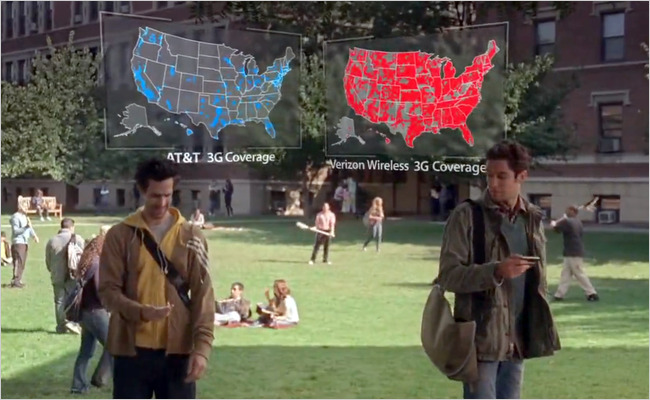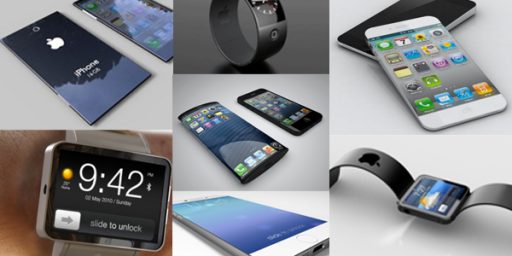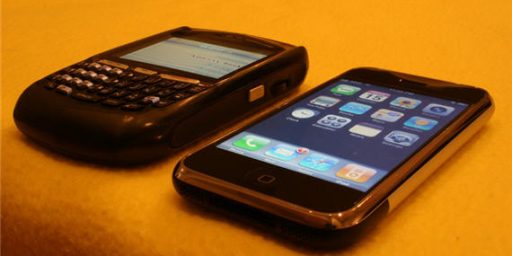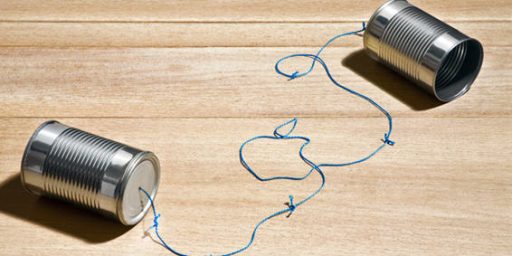iPhone Gives AT&T Bad Name
You know those ubiquitous maps showing that Verizon has ridiculously better 3G coverage than AT&T? And all those people complaining about Apple’s forcing those who want to use the iPhone to use AT&T? It turns out that AT&T’s coverage is great and the iPhone itself is the issue.
Roger Entner, senior vice president for telecommunications research at Nielsen, said the iPhone’s “air interface,” the electronics in the phone that connect it to the cell towers, had shortcomings that “affect both voice and data.” He said that in the eyes of the consumer, “the iPhone has the nimbus of infallibility, ergo, it’s AT&T’s fault.” AT&T does not publicly defend itself because it will not criticize Apple under any circumstances, he said. AT&T and Apple both declined to comment on Mr. Entner’s assessments.
Neither AT&T nor Verizon was willing to reveal its internal data on performance. But Global Wireless Solutions, one of the third-party services that run network tests for the major carriers, shared some of its current findings. The service dispatches drivers across the country with phones and laptops equipped with data cards. They have covered more than three million miles of roads this year, while running almost two million wireless data sessions and placing more than three million voice calls, said Paul Carter, the president.
The results place AT&T’s data network not just on top, but well ahead of everyone else. “AT&T’s data throughput is 40 to 50 percent higher than the competition, including Verizon,” Mr. Carter said. AT&T is a client and Verizon is not, he added.
More evidence that AT&T’s data network is head-and-shoulders above Verizon’s comes from Root Wireless, a start-up in Bellevue, Wash., that is developing software for consumers to install on their smartphones to do continuous network tests. This generates empirical data for consumers who “today are buried under opinions and advertising slogans,” said Paul Griff, the chief executive. Root Wireless has no business relationship with any carrier. This year, Root Wireless ran 4.7 million tests on smartphones for each of the four major carriers, spread across seven metropolitan areas: Chicago, Dallas, Los Angeles/Orange County, New York, Seattle/Tacoma, the San Francisco Bay Area, and Washington. In every market, AT&T had faster average download speeds and had signal strength of 75 percent or better more frequently than did Verizon. (A Verizon spokesman declined to comment about these test results or those of Global Wireless Solutions.)
I asked Ron Dicklin, chief technology officer at Root Wireless, how these results, showing AT&T as the clear leader, could be reconciled with the negative appraisal of Consumer Reports’ respondents. He explained that his company’s tests of AT&T’s data network were done with handsets other than the iPhone, which does not allow non-Apple programs like his to run in the background.
AT&T’s besting of Verizon in these tests is all the more remarkable considering the sudden jump in the volume of mobile data that its network has had to handle with the introduction of the iPhone 3G in 2008: approximately 4,000 percent.
Chetan Sharma, a telecommunications consultant whose clients have included AT&T and Verizon, said that when the network and the handset were improved, customers “just used it all the more.” AT&T didn’t anticipate the rate of growth and didn’t upgrade fast enough in some markets, he said. “Other operators have the luxury of watching and learning from AT&T,” he said, “which has the most number of next-generation smartphones, with full browsers and built-in video players.”
I use a BlackBerry onT-Mobile’s network and my wife uses a BlackBerry on Verizon’s network, so I’ve got no dog in the fight. But it’s interesting that such a lucrative business arrangement as being the exclusive carrier for the most hyped device, ever, has resulted in the impression that AT&T has an inferior network.
The company’s own ads aren’t helping matters much. Their response to the maps is to read out a bunch of cities where they DO have coverage. But it’s the gaps that are at issue.
UPDATE: John Gruber offers a persuasive rebuttal to Stross’ piece. Among his points:
- Stross’s primary source is Paul Carter, the president of Global Wireless Solutions, a network testing firm. Carter acknowledges that AT&T is one of his company’s client, and Verizon is not. I mean, come on.
- Stross’s second source is Root Wireless, a company whose data comes from some sort of software that runs in the background on unnamed smartphones, which of course (since the software runs in the background) means the iPhone is not included.
- Consumer Reports’s rankings, which put AT&T last and Verizon first, were based on actual customer surveys. Actual customers reporting their actual experiences.
- If it’s the iPhone’s fault, not AT&T’s, why aren’t iPhone users around the world having the same problems as those here in the U.S.? How come iPhone carriers in Europe turned on tethering support as soon as iPhone OS 3.0 was released, and AT&T still, seven months later, has not?
Interesting.







I have a Blackberry Curve via ATT, and the only complaint I could make is that I sometimes have trouble with Google Maps being unable to aquire–“temporarily unavailable”– a GPS signal, but the cell tower placement kicks in after a minute or so.
I’m basically happy with my iPhone. It works as well as I could ask in urban areas, including overseas. (Use WiFi, not G3 overseas unless you’ve got a lot of money to burn!!)
I do notice holes in the AT&T coverage along I-95, though, particularly in the Carolinas. Now, these are rural areas and I’m not sure that anyone is really providing coverage in those areas.
The test were done in major cities. What does that have to do the map of coverage?